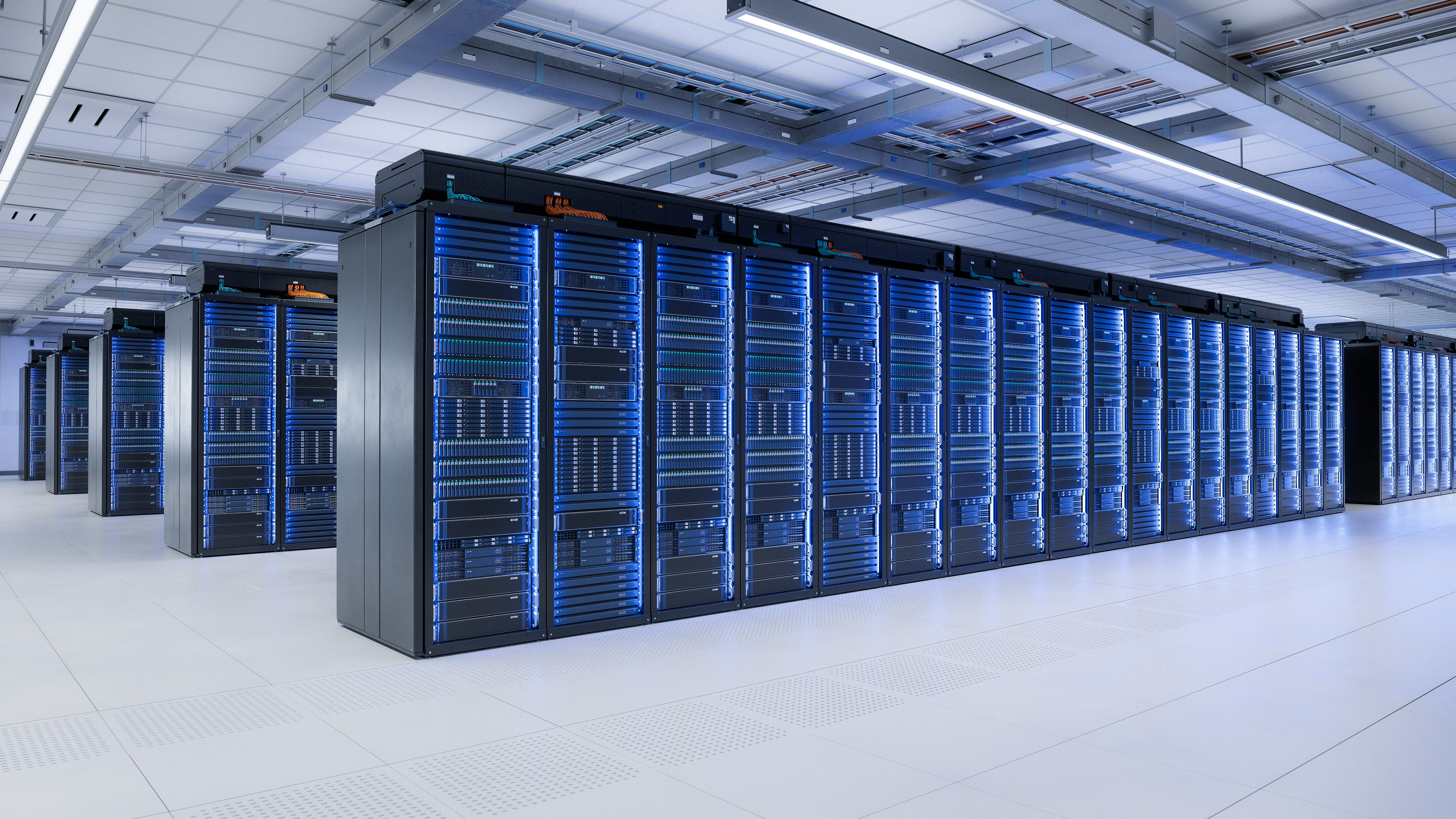
What is a data centre, and why do they matter?
Every time you email a friend or watch a video on YouTube or buy something online – you will be relying on a data centre.
A data centre is a specialised building – like a large warehouse – filled with computer equipment, including servers, storage systems, switches and routers.
As more and more of our everyday life moves online, these data centres are vital places for storing, managing and sharing vast amounts of data.
And now, with the advent of AI – and the vast computing power it requires – this role will only become bigger.
That latest movie from Netflix? That is held in a data centre. All your photos on iCloud? In a data centre. Your bank account? Yes, it is there too. And all of that data is made available to us via the internet on our tablets, phones, TVs and PCs.
Today, virtually every online activity, searching the web, streaming videos, social networking, online shopping, paying your tax bill and even smart home devices, relies on the seamless operation of data centres. They support critical sectors such as healthcare, finance, education, government, and entertainment.
And whilst we often think of this information being held ‘on the internet’ or ‘in the cloud’ it is actually held and managed in a physical building somewhere in the world.

Who owns and runs data centres?
And thirdly there are hyperscale data centres, such as those run by big tech companies like Google, Amazon, and Microsoft, built to support massive volumes of data and users.
Where are data centres located?
Data centres can be located anywhere - and often the data you are accessing via your phone may be held in a data centre overseas – in Norway or Ireland for example.
In Britain, many data centres are located near to London – due to their proximity to the capital’s global financial markets.
But increasingly, companies and the UK and Scottish governments are looking to locate data centres in other locations in Britain - firstly, to ensure that we are well-equipped for an increasingly digital world, and secondly, because data centres bring with them well-paid long-term jobs which can revitalise the local area.
The computers in data centres require a lot of energy – mainly to keep them cool – so ideally they should be located in places with a temperate climate and a good supply of electricity.
AI data centres
In the last year or so there has been an explosion in interest in artificial intelligence – or AI.
AI is where we can use a new generation of supercomputers to do a whole range of everyday tasks – to help people and make our lives better.
In health care, AI can help doctors find diseases earlier and suggest better treatments, which can save lives. In science, AI helps researchers find new discoveries faster by analysing huge amounts of data, leading to new medicines or understanding our planet better.
However, in order to do this, AI needs large amounts of computing power because it has to process and analyse enormous amounts of information very quickly, often learning from millions of examples to make decisions or answer questions.
And this means that AI data centres will be much bigger than current data centres and will use a lot more energy.

Scotland’s role
Data centres are very large consumers of energy, but Scotland has enormous capacity to generate renewable energy, creating an opportunity for the country to become a leader in green data centres. The Scottish Government’s Green Datacentres and Digital Connectivity Vision and Action Plan (2021) aims to drive investment in this growing sector, encouraging high-quality data centres with zero to minimal reliance on fossil fuels and supported by a highly skilled workforce.
With its abundant renewable energy, cool weather and large amounts of land, Scotland is an ideal location for the next generation of AI data centres.
Scotland’s abundant renewable energy, cool climate, and available land position it at the forefront of renewable-powered AI data centres. Unlike the south-east of England, where land is scarce, Scotland offers locations that are well-suited to this type of development. Over the next decade, a new generation of offshore wind farms will deliver significant volumes of green energy to power these future ‘information hubs,’ helping make them as environmentally sustainable as possible.
Apatura is working with a number of partners to develop up to nine AI data centres across Scotland’s central belt.
Each one of these – if approved – could bring £billions in inward investment and thousands of new jobs during construction, and hundreds of well-paid, long-term local jobs during operation.
We are now meeting local communities, landowners, colleges, businesses and many other organisations to share our ambitious vision and gather local views on how the benefits of new AI data centres can be maximised for the benefit of all.
Core components of an AI data centre
A typical data centre comprises several key components:
- Servers: the fundamental units that handle processing and storage tasks. Servers run applications, host websites, manage databases, and perform countless other functions.
- Storage Systems: these systems store the vast quantities of digital information that organisations generate and use. Storage can include hard drives, solid-state drives, and large-scale storage arrays.
- Networking Equipment: switches, routers, firewalls, and other devices connect servers to each other and to the outside world, providing the pathways through which data travels.
- Power Systems: data centres require significant and highly reliable power supplies, often including backup generators and uninterruptible power supplies (UPS) to ensure continuous operation
. - Cooling Systems: the servers and equipment in a datacentre generate substantial heat, so advanced cooling systems are essential to maintain optimal operating temperatures and prevent hardware failure.
- Security: physical and digital security measures protect the data and infrastructure. This can include surveillance, access controls, fire suppression systems, and cybersecurity protocols.
We value your opinions, please take part in our feedback survey
It only takes five minutes, and your answers could make a meaningful difference to the project.